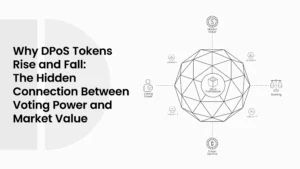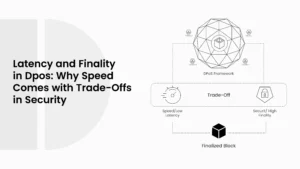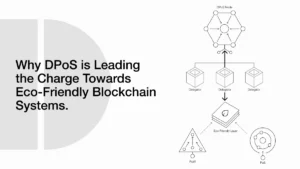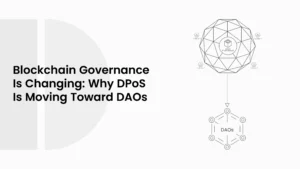Learning from Failures: Post-Mortems of Abandoned DPoS Projects
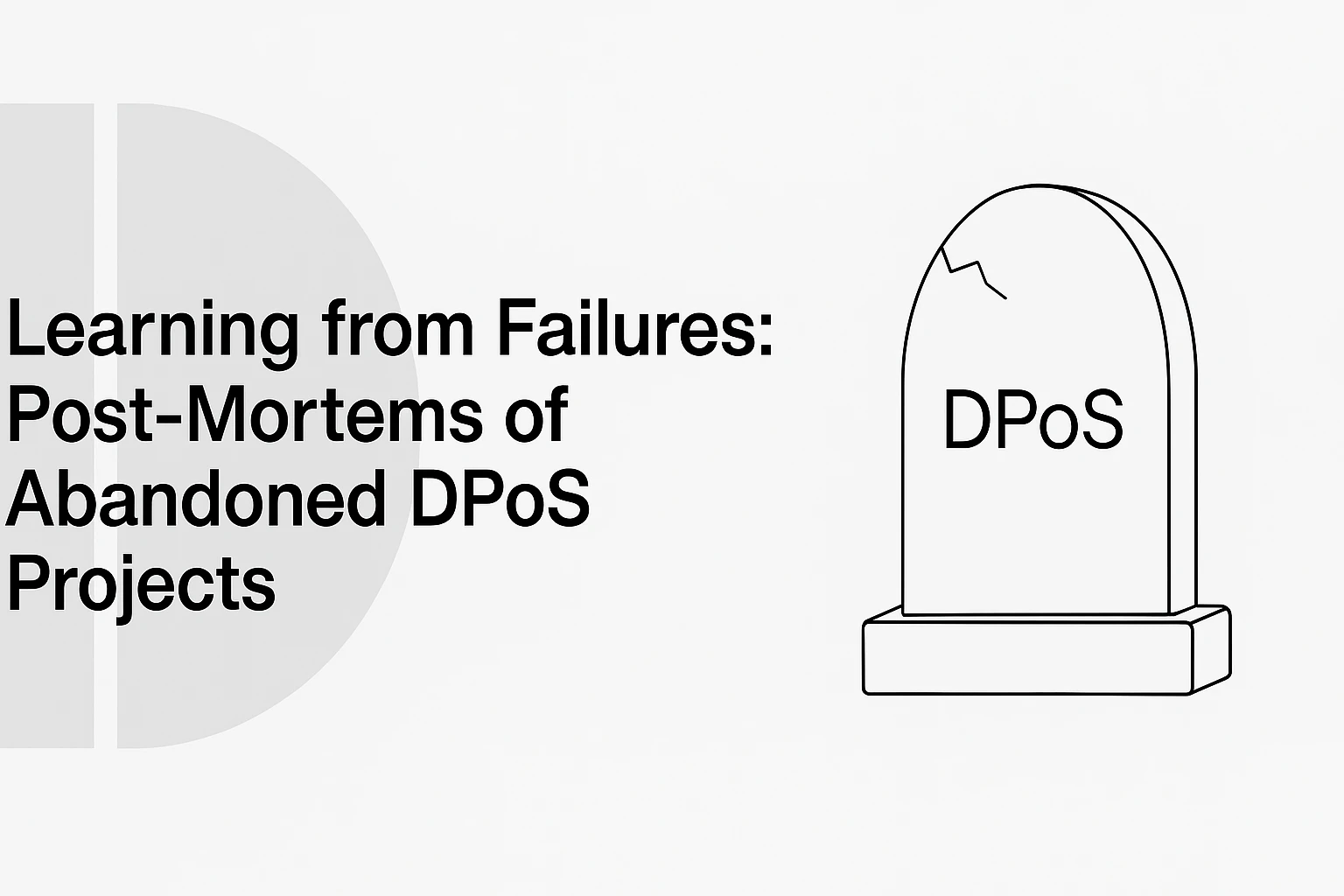
Delegated Proof of Stake, also called DPoS, was once seen as a new and exciting way to run a blockchain. It was fast, it was low-cost, and it gave power to token holders who could vote for block producers. Many projects said DPoS will solve the problems of slow speed in Proof of Work and high cost in Proof of Stake. At first, it sounded like the future of blockchain.
- What Is DPoS, What Makes It Popular?
- Why Do Some DPoS Projects Fail?
- Weak Community Governance and Voter Apathy
- Token Concentration and Whales
- Technical Limits and Lack of Upgrades
- External Attacks and Takeover Risks
- Common Reasons Why DPoS Blockchains Fail
- Case Study: The Fall of Steem and TRON Takeover
- What Happened During the TRON Takeover
- Why the Steem Community Lost Control
- Lessons From This Takeover
- The Steem vs TRON Takeover
- Case Study: EOS and Its Lost Momentum
- Why EOS Started Strong but Slowed Down
- Problems With Governance and Voter Participation
- How High Expectations Led to Disappointment
- Case Study: Abandoned Smaller DPoS Chains
- Examples of Smaller Projects That Shut Down
- Why Low Activity and Weak Developer Support Kill Chains
- Patterns Across These Failures
- Key Lessons From Abandoned DPoS Projects
- The Role of Strong Governance Rules
- Why Decentralization of Tokens Matters
- Why Active Community Engagement Is Critical
- Lessons From Failed DPoS Projects
- How Takeover Risks Hurt DPoS (Research Insights)
- Why Theoretical Security and Real Behavior Are Different
- How Passive Voters Make Chains Weaker
- Takeover Resistance in Theory vs Practice
- Comparing Thriving vs Failed DPoS Chains
- Examples of Active DPoS Chains
- What They Did Differently
- Active vs Failed DPoS Projects
- How Future DPoS Chains Can Avoid These Failures
- Building Better Governance Tools
- Encouraging Active Voting and Fair Rewards
- Limiting Whale Dominance With Rules
- Regular Upgrades and Open Communication
- How DPoS Projects Can Avoid Failure
- Conclusion
- Frequently Asked Questions About Post Mortems of Abandoned DPoS Projects
- What are some famous failed DPoS projects?
- Why did Steem lose to the TRON takeover?
- Is DPoS still safe to use today?
- What lessons should new blockchains learn from failed DPoS chains?
- Glossary of Key Terms
But later, many of these DPoS projects did not survive. Some lost their community. Some got taken over by big token holders. Some just slowed down until nobody cared anymore. There are also cases where outside forces attacked and took control, like what happened to Steem when TRON stepped in.
This blog will strive to learn from its failures. This blog will look at post-mortems of abandoned DPoS projects. By doing this, everyone can see what went wrong and what lessons future projects can learn. In blockchain, failures are just as important as success stories because they teach us what to avoid.
ALSO READ: Why Delegated Proof of Stake (DPoS) Appeals to Smaller Blockchains
What Is DPoS, What Makes It Popular?
DPoS is short for Delegated Proof of Stake. It is a type of consensus system that lets token holders vote for people, called validators or block producers, who run the network. Instead of everyone trying to mine like in Bitcoin, or staking directly like in normal Proof of Stake, in DPoS, you just choose delegates. These delegates create and confirm blocks.
The system was popular because it promised speed and low energy use. Many projects wanted to copy the success of EOS, TRON, and Steem in the early days. Small projects also liked it because it was cheaper to run compared to Proof of Work.
There were also social reasons. DPoS looked more democratic. People liked the idea that the community could choose who runs the blockchain. It was like an election, where votes decide who becomes a block producer. That gave many users hope that they would have real power in the network.
But even with all this hope, problems started to show. The idea looked nice on paper, but in the real world, it was hard to make it work the way it was promised. Many chains that started with DPoS could not keep up because of weak governance, low voter turnout, and whale control.
Why Do Some DPoS Projects Fail?
Why do DPoS projects fail? There are many reasons, and often it is not just one reason but a mix of them. Below are some of the most common issues that made projects collapse.
Weak Community Governance and Voter Apathy
DPoS depends on people voting. But in real life, most people do not vote. In many DPoS chains, only a small percentage of token holders ever take part in voting. This creates apathy, which means a lack of interest. When only a few people vote, power gets stuck in the hands of a small group of block producers. That kills the spirit of decentralization.
Token Concentration and Whales
In theory, anyone can vote. But in practice, the people who hold the most tokens, often called whales, control most of the voting power. This leads to centralization. For example, if one whale has 20% of all tokens, they can control who becomes a block producer. Many projects saw this problem but could not solve it.
Technical Limits and Lack of Upgrades
Some projects just stopped growing because they failed to upgrade. When developers left or stopped supporting, the chain slowed down. No new features, no bug fixes, and no updates mean the project loses relevance. Competitors with stronger developer teams took their place.
External Attacks and Takeover Risks
Another big reason is an outside takeover. The most famous one was when the TRON founder took over Steem in 2020. In less than one hour, the whole network was in control of TRON. This happened because the DPoS model was weak when whales team up or exchanges use customer funds to vote. That was a major lesson in how risky DPoS can be if rules are not strong enough.
ALSO READ: Bridging Governance: How DPoS Chains Can Integrate with DAOs
Common Reasons Why DPoS Blockchains Fail
| Reason | How It Happens in the Real World | Effect on Blockchain |
| Weak governance & low voting | Token holders don’t vote; power stays with a few | Centralization and low trust |
| Token concentration (whales) | Big holders control the majority of votes | Delegates serve whales, not users |
| Lack of upgrades | No developer support, no features added | Users leave, project dies |
| Takeover and outside attacks | Exchanges or whales seize control | Community loses, chain collapses |
Case Study: The Fall of Steem and TRON Takeover
The story of Steem and TRON is maybe the most famous DPoS failure. It shows in real life how a takeover can happen when whales and big players step in. Steem was once a strong project, known for running the Steemit social media platform. It had thousands of active users and a working economy of rewards for writers and curators. But everything changed in early 2020.
What Happened During the TRON Takeover
In February 2020, Justin Sun, the founder of TRON, bought Steemit Inc. This company owned a large number of Steem tokens that had been promised to be kept aside for development. But when TRON got control, those tokens were used to vote. At the same time, large crypto exchanges like Binance and Huobi also helped by using customer tokens to vote for TRON’s side.
This gave TRON sudden power over the block producers. In less than one hour, TRON had replaced the original Steem witnesses (validators) with their own people. This shocked the Steem community. Many long-time users felt betrayed because the network they had built for years was taken from them in a single day.
Why the Steem Community Lost Control
The takeover happened because of weak rules in the DPoS system. Token holders had the right to vote, but when exchanges used tokens from customers, the balance was broken. Also, many regular token holders were not active voters, so they could not resist the takeover.
Another issue was that there was no clear protection against hostile votes. The rules did not stop big players from suddenly using massive voting power. In theory, the community could have resisted by voting more, but in practice, they were not organized enough.
Lessons From This Takeover
This case teaches a few hard lessons. First, DPoS projects must never allow concentrated tokens to be used in secret or by outside parties like exchanges. Second, the system must encourage strong community participation so that whales cannot easily overpower everyone else. Third, security rules must be in place to prevent fast hostile takeovers.
For many people, the Steem-TRON takeover became proof that DPoS, while fast and efficient, can also be fragile when token power is not spread out fairly.
ALSO READ: Hybrid Governance Models: Blending DPoS with Traditional PoS
The Steem vs TRON Takeover
| Factor | Before Takeover (Steem) | After Takeover (TRON) |
| Control of votes | Spread across the community and witnesses | Dominated by TRON + exchange votes |
| Community feeling | Strong trust, long-term builders | Shock, betrayal, and many left the chain |
| Network governance | Weak rules against sudden token use | New witnesses installed in one hour |
| Outcome | Steem community split, many moved to Hive | TRON kept control of the old Steem chain |
Case Study: EOS and Its Lost Momentum
EOS was once called the “Ethereum killer.” In 2018, it raised more than 4 billion dollars in an ICO, the biggest of its time. The promise was huge: faster transactions, zero fees, and a new kind of governance powered by DPoS. At first, EOS looked like it would take over the blockchain world.
But after the hype, the momentum started to slow down. Many people began to ask about the progress. The chain was still running, but it was not living up to the promises.
Why EOS Started Strong but Slowed Down
The start was amazing because of the money raised and the attention from the crypto industry. Developers were excited, and many apps began building on EOS. But when the years passed, problems started showing up.
One of the biggest issues was centralization. Just like other DPoS projects, the top block producers often stayed the same. Whales kept voting for the same set of delegates. This created questions about fairness and whether EOS was really decentralized.
Another problem was technical stagnation. The upgrades and features that people were waiting for did not arrive quickly. Ethereum, even with its higher fees, continued to grow because of DeFi and NFTs. EOS did not capture this wave.
Problems With Governance and Voter Participation
DPoS requires people to keep voting and stay engaged. But in EOS, many token holders did not vote at all. Those who did often voted based on alliances, not quality. This meant that block producers worked more for their own benefit rather than the community.
This governance weakness led to disputes. Some groups even accused block producers of vote buying, which is when whales trade favors to stay in power. That damaged trust.
How High Expectations Led to Disappointment
Because EOS raised so much money, the expectations were sky high. People thought it would change the internet. But when the reality did not match the hype, disappointment grew. The community felt that billions of dollars were wasted with little to show for it. Over time, projects and developers slowly moved away.
EOS did not collapse like Steem, but it lost its momentum. Instead of being a leader, it became a warning that big promises and big money do not always create long-term success.
Case Study: Abandoned Smaller DPoS Chains
Not only did the big names like Steem and EOS struggle. Many smaller DPoS blockchains also failed or were left behind. Some had strong ideas at the start, but they never reached critical mass. Others were launched quickly but lacked developer support to keep them alive.
Examples of Smaller Projects That Shut Down
There were DPoS chains built for gaming, supply chain, and social networks. Many of them had fewer than ten thousand users at peak. When funding dried up or when developers left, the chain just became inactive. In some cases, block producers stopped running nodes because it was not profitable anymore.
Why Low Activity and Weak Developer Support Kill Chains
A blockchain is only as strong as its community and its developers. When both are weak, the project cannot move forward. Without updates, bugs stay unfixed, and users lose trust. With no new apps or real activity, the token value drops, and soon nobody wants to hold or use it.
Patterns Across These Failures
Looking at these small abandoned chains, the pattern is clear. Most of them:
- Did not build a large or loyal community.
- Relied on a few developers instead of a broad network.
- Faced strong competition from bigger chains like Ethereum, Solana, and TRON.
These failures are less dramatic than Steem or EOS, but they still matter. They show that DPoS is not easy to maintain, especially for small projects without strong foundations.
Key Lessons From Abandoned DPoS Projects
After looking at Steem, EOS, and smaller projects, everyone can see a few big lessons. These lessons are useful for anyone building or studying a blockchain. They explain why DPoS is not simple and what mistakes must not be repeated.
The Role of Strong Governance Rules
Governance is the way decisions are made. In DPoS, governance is done by voting for block producers. But when rules are weak, whales and exchanges can take over. Strong governance needs clear protections. For example, tokens held for development should not be used for sudden votes. Also, limits should exist so that no single whale can decide everything.
Why Decentralization of Tokens Matters
A DPoS chain is safe only if tokens are spread out. If a few wallets hold most of the supply, then the system is basically centralized. This was one of the problems with both EOS and Steem. Too much power in too few hands made the whole chain fragile. Future projects must find ways to spread tokens more fairly.
Why Active Community Engagement Is Critical
If users don’t vote, the system fails. That is maybe the biggest weakness in DPoS. Most users are passive, so power stays in the hands of a few. Projects need to motivate people to vote often and to understand its importance. If the community is sleeping, then whales can run everything.
ALSO READ: Why Some DPoS Chains Thrive While Others Fade Away
Lessons From Failed DPoS Projects
| Lesson | What Everyone Saw in Failed Projects | What Should Be Done in the Future |
| Weak governance rules | Takeover of Steem by TRON and exchanges | Build strict rules for token voting |
| Token centralization | EOS whales controlled block producers | Spread tokens widely, avoid hoarding |
| Low community participation | Few users voted, apathy in governance | Reward active voters, run education |
| Lack of upgrades and updates | Smaller chains became outdated | Keep dev teams strong, upgrade often |
These lessons make it clear. DPoS is not just about technology. It is also about people, fairness, and trust. Without these, the chain will always face the risk of failure.
How Takeover Risks Hurt DPoS (Research Insights)
One of the biggest dangers for DPoS chains is the chance of takeover. A takeover means that one group or one person suddenly gets enough control to replace the block producers and rule the chain. This is not just theory. It already happened, like everyone saw in Steem.
In 2023, a study published on arXiv by researchers Chao Li and others looked at this exact issue. They studied how resistant DPoS blockchains are to hostile takeovers. They focused on EOSIO, Steem, and TRON. The paper said that in theory, DPoS could resist a takeover if voters all work together. But in the real world, voters are not always active.
Why Theoretical Security and Real Behavior Are Different
On paper, if everyone votes, the system should be strong. But in real life, only a small number of token holders actually vote. This gap between theory and practice makes DPoS weaker than it looks. The researchers found that active resistance in real projects was far lower than the theoretical upper bound.
In simple words, this means the chains were easier to take over than people thought.
How Passive Voters Make Chains Weaker
Passive voters are people who hold tokens but never vote. They create a hole in the system. Whales or exchanges can use this gap to take over. The study showed that diversity in voter behavior affects security. If everyone behaves differently and most stay passive, then a hostile group can quickly dominate.
This shows why just having a DPoS design is not enough. You need real participation from the community; otherwise, the rules mean nothing.
Takeover Resistance in Theory vs Practice
| Factor | In Theory (DPoS Design) | In Practice (Real Chains) |
| Voter participation | High, many people are voting actively | Low, only a small percentage of users vote |
| Security against takeover | Strong if the community unites | Weak, whales, and exchanges take control |
| Token distribution | Spread fairly among users | Concentrated in a few wallets |
| Resistance outcome | Very difficult to hijack the chain | Takeovers like Steem-TRON are possible |
This research confirms what post-mortems already showed. DPoS can look democratic, but in real life, the power balance is fragile. Without active and wide participation, chains are open to capture by the biggest players.
Comparing Thriving vs Failed DPoS Chains
Not every DPoS chain failed. Some are still alive and working today. TRON itself, despite being involved in the Steem case, is one of the biggest active chains. Other projects like Lisk and WAX also continue to operate. This makes it useful to compare why some survived while others faded away.
Examples of Active DPoS Chains
TRON is a strong example. It has millions of daily transactions, used for things like stablecoin transfers. Lisk, while smaller, is still running because of steady development and a loyal community. WAX has focused on gaming and NFTs, building a niche where users keep coming back.
These projects show that DPoS is not always doomed. With the right support and strategy, it can last.
What They Did Differently
One big difference is token use. In successful projects, tokens are more spread out and used actively. Community engagement is stronger, with users who actually vote and take part in decisions. Also, these chains keep upgrading and finding new use cases.
Failed projects often stopped growing, lost developers, and saw voter apathy. Surviving ones found ways to keep people interested, even if they faced the same risks.
Active vs Failed DPoS Projects
| Factor | Active Projects (TRON, Lisk, WAX) | Failed or Abandoned Projects (Steem, EOS, small chains) |
| Token distribution | Wider spread, used for daily activity | Concentrated in whales or exchanges |
| Community voting | More engagement, regular participation | Weak, most users passive |
| Developer support | Continuous upgrades and new features | Stopped updates, developers left |
| Market relevance | Stablecoin use, NFTs, and gaming | Lost to competitors like Ethereum, Solana |
| Trust and governance | Managed issues better, and communication is open | Governance disputes, vote buying, and hostile takeovers |
This comparison makes it clear. DPoS does not fail because of the system alone. It fails when there is no community, no upgrades, and no trust. If those three are strong, then DPoS chains can survive.
How Future DPoS Chains Can Avoid These Failures
Looking at all the post-mortems, one thing is clear. DPoS is not broken by design, but it needs strong rules and active users to survive. Future chains can learn from past mistakes. If they take the right steps, they can avoid the same fate as Steem or EOS.
Building Better Governance Tools
Governance is at the heart of DPoS. Future projects must build tools that stop sudden takeovers. For example, tokens owned by exchanges should not be used for voting without clear approval. There should also be systems that slow down hostile votes, so the community has time to respond.
Encouraging Active Voting and Fair Rewards
If people don’t vote, DPoS fails. So new chains must find ways to keep users engaged. Rewards for active voters, simple voting apps, and constant reminders can help. Even small things like mobile-friendly voting can raise participation.
Limiting Whale Dominance With Rules
Whales will always exist, but rules can stop them from owning the system. Some chains test weighted voting, where more small votes together can balance one big whale. Others use capped influence so that no wallet can control more than a set percent.
Regular Upgrades and Open Communication
Developers must keep improving the chain. If upgrades stop, the chain slowly dies. Also, open communication with the community builds trust. When people feel part of the process, they are more likely to stay active.
How DPoS Projects Can Avoid Failure
| Risk From Past Failures | Prevention Strategy for Future Projects |
| Sudden takeovers | Limit exchange voting, slow down hostile votes |
| Voter apathy | Reward active voting, easy voting tools |
| Whale dominance | Cap voting power, test weighted voting systems |
| Developer exit | Fund long-term dev teams, clear upgrade roadmap |
| Community mistrust | Open updates, involve users in decisions |
These steps may not remove all risks, but they can make DPoS stronger. The future of this system depends not just on code but also on how people use it and how fairly the power is shared.
Conclusion
The story of DPoS is full of high hopes and hard lessons. Chains like Steem showed how fast a takeover can destroy trust. EOS proved that even billions of dollars cannot fix weak governance and low community action. Smaller DPoS projects also reminded us that without developers and users, a blockchain has no life.
But at the same time, some chains like TRON, WAX, and Lisk continue to run. They are not perfect, but they show that survival is possible if the right choices are made. Strong governance, fair token spread, active voters, and constant upgrades are the real keys.
It is only fragile when people do not care enough to protect it. Future projects can avoid failure if they learn from these mistakes and make their systems stronger.
Frequently Asked Questions About Post Mortems of Abandoned DPoS Projects
-
What are some famous failed DPoS projects?
Steem and EOS are the most well-known examples. Steem was taken over by TRON in 2020. EOS lost its momentum after raising billions but failing to deliver upgrades. Many smaller chains also stopped working because they had no developers or users left.
-
Why did Steem lose to the TRON takeover?
Because voting power was too concentrated. TRON used tokens, plus help from big exchanges, to take control of block producers in less than one hour. The Steem community was not organized enough to stop it, and many users moved away after.
-
Is DPoS still safe to use today?
It can be safe if the chain has strong governance rules and active voters. But it always has the risk of whale dominance and low participation. Projects like TRON and WAX still use DPoS, but they must keep working to avoid the same failures.
-
What lessons should new blockchains learn from failed DPoS chains?
They should focus on spreading tokens more fairly, rewarding active voters, and keeping upgrades alive. Also, rules should stop sudden takeovers from whales or exchanges. Community engagement is just as important as technology.
Glossary of Key Terms
DPoS (Delegated Proof of Stake): A blockchain system where token holders vote for block producers who confirm transactions.
Whales: People or groups who hold very large amounts of tokens and can control votes.
Governance: The way decisions are made in a blockchain, often through voting.
Takeover: When one group or person gets enough control to rule the blockchain.
Validator / Block Producer: The people elected in DPoS to add new blocks and keep the chain running.

